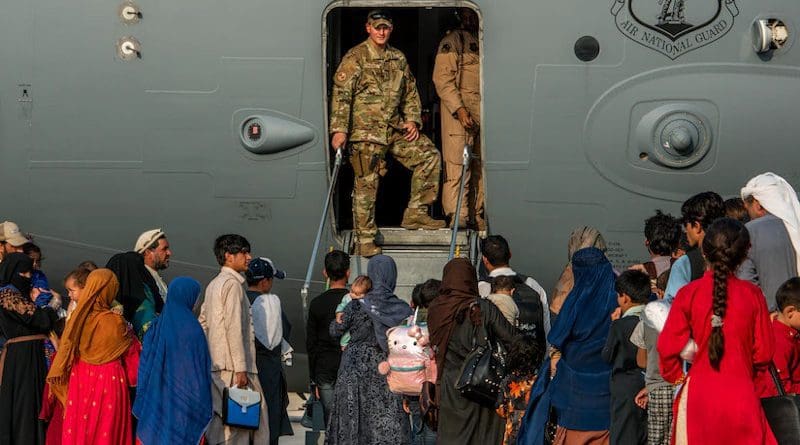US Says Fast-Paced Airport Ground Ops Keeps Evacuees Moving
By DoD News
By C. Todd Lopez
In the last 24 hours, more than 10,000 evacuees have been moved out of Hamid Karzai International Airport in Kabul, Afghanistan. It’s an exhausting pace the U.S. military will sustain so that everyone eligible to leave the country can get out, the commander of U.S. Transportation Command said.
“I’m very confident that we’ll sustain that effort, and improve that effort, to be honest with you,” said Army Gen. Stephen R. Lyons, during a briefing Monday at the Pentagon.
Airlift is a huge part of the effort to evacuate U.S. citizens and Afghan civilians with special immigrant visas out of Kabul, Lyons said. Since August 14, about 37,000 have been evacuated from the country. But other factors are also important in making the mission happen.
Chief among those efforts, he said, are the ground operations in Afghanistan that are under the control of U.S. Central command. Those efforts ensure that those who want to leave are where they need to be so planes can load up.
“Critical to the throughput is also ground operations and we’re trying to synchronize that as we go,” he said. “We are clearly laser focused on clearing the international airport of every evacuee that can move.”
Right now, Lyons said, Transcom’s air component has over 200 aircraft dedicated to the effort and is working to keep those aircraft on the ground for less than an hour to on-board evacuees.
“You know we’ve got a number of planes in the system, but we have twice as many crews. The idea is to keep those planes moving all the time — either by extending the crew day or preferably by swapping crews and keeping the iron in motion,” he said. “The faster we can turn, either load or discharge, the faster we can turn that aircraft … I really appreciate the work on-going in Afghanistan to bring down the time on ground to under an hour.”
Additionally, he said, every effort is being made to ensure every plane is full when it leaves the airport in order to maximize throughput. That requires constant communication with Centcom, he said.
“I talk to Gen. McKenzie on a continuous basis, so we’re synched up. The idea is we never want to leave Kabul airport on an empty plane or even a partially full plane if we can avoid it,” Lyons said. “We’re filling the aircraft to about 400-450 passengers in the floor load configuration.”
Lyons also said that due to conditions at Kabul, Transcom isn’t refueling aircraft there, but is instead ensuring aircraft that arrive bring enough fuel with them to leave. If need be, he said, aircraft can also use aerial refueling.
“We are pushing the limits to do everything we can to get every single evacuee out of Kabul,” he said.

